Urchin Software and the Real Story behind Google Analyticsre Corp.
Urchin Software Corporation is a web analytics company based in San Diego, CA. The company's founder is Paul Muret, Jack Ancone, Brett Crosby, and Scott Crosby (yours truly). In April 2005, Google acquired the company, and Urchin products became "Urchin from Google," then Google Analytics only. In celebration of the last ten years of this purchase, perhaps this is the right time to recall the company's history for posterity. I do not expect to turn this article into an enchanting content for unrelated parties; which is a celebration of closing the book that records an entire era.
The first forerunner of Urchin Software Corp was born by Paul Muret and Scott Crosby (me) in late 1995. Previously, Paul worked in the Department of Space Physics at UCSD, where he knew HTML 1.0. After being assigned the task of putting the faculty's outline online. Paul and I are now college roommates, living in Pay Park, San Diego. One night Paul went home from work and said he saw an opportunity from building a business website. In order to prove his point, he opened the gray-green-on-the-background page for UCSD. Perhaps some texts even get <BLINK> ed. I agreed and started thinking about the business plan. The plan was introduced to my well-known rich uncle (Chuck Scott), he agreed to invest $ 10,000 for "the company" and handed us a table at a corner of his office at CBS Scientific. . And it took quite a long time for him to see the result that the money brought.

With financial support from Chuck, our new company bought a Sun SPARC 20 for webserving and bought an ISDN line. Have you ever heard of "token ring"? That's how my office computers are connected – coaxial cables with fun twist-lock fittings, quite similar to TV cables. Extremely ancient. Anyway, Paul and I then continued to focus on finding customers, still very slow at this time. Most customers are small businesses with a relatively modest monthly fee, like Cinemagic, a vintage poster-film company managed by lovers Herb and Roberta. Another customer is a poorly-known subsidiary of Pioneer Electronics, specializing in the old LaserDisc [1] format (even by that standard).

These initial "victories" made us optimistic enough to rent an office in Old Town San Diego. Our new office has a round window overlooking the bay and San Diego airport, which is also quite luxurious. In 1997, Brett Crosby (my younger brother) joined the company, and things started to flourish. We managed to sign a contract with two big employers here, Sharp Healthcare (hospital system), and Solar Turbines * (energy production subsidiary of Caterpillar). But we still have a handful of small customers, this group of customers is dedicated to a webser, and a circulation fee is collected. To accurately price customers by bandwidth (strange? There was a time when bandwidth was so expensive), Paul wrote a simple chapter of simple log analyzer to count the number of bytes transferred, and give it a delivery. temporary web site He added referrers, " hits ", pageviews, … and unexpectedly, the first version of Urchin was born. After some further development, in addition to date-range features, user authentication, … this immature product has been introduced to customers, and they have been well received with great appreciation.
[* this business earned $ 10 / month to maintain business for at least a year; thanks Steve!]
Brett's girlfriend back then (Julie, now a husband and wife) also worked "in the industry", for Rubin Postaer Interactive ("RPI", a subsidiary of RPA; A = Associates-partner). The RPA has been and is still a prominent web development & advertising store in LA, and they manage Honda.com accounts. At the end of 1997, through our internal RPA (Julie), Honda.com (who was using WebTrends at the time), was unable to handle Apache's daily access log before the end of the day, making them even worse. behind. After much effort, we received a few days server log to process the demo, and the work was completed in just 30 minutes. And so, we became the web analytics solution for American Honda from then on, and obviously, from this log processing technology can build a business.
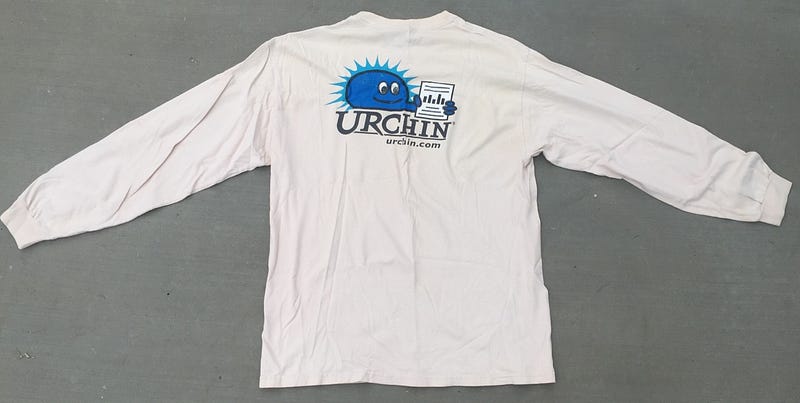
Around the same time, Jack Ancone entered the company, (initially) undertook CFO and moved to San Diego. At the same time, we also moved to the new office at 2165 India St. The company is now known as Quantified Systems, Inc., and its work is divided equally into web dev, hosting, and software dev.
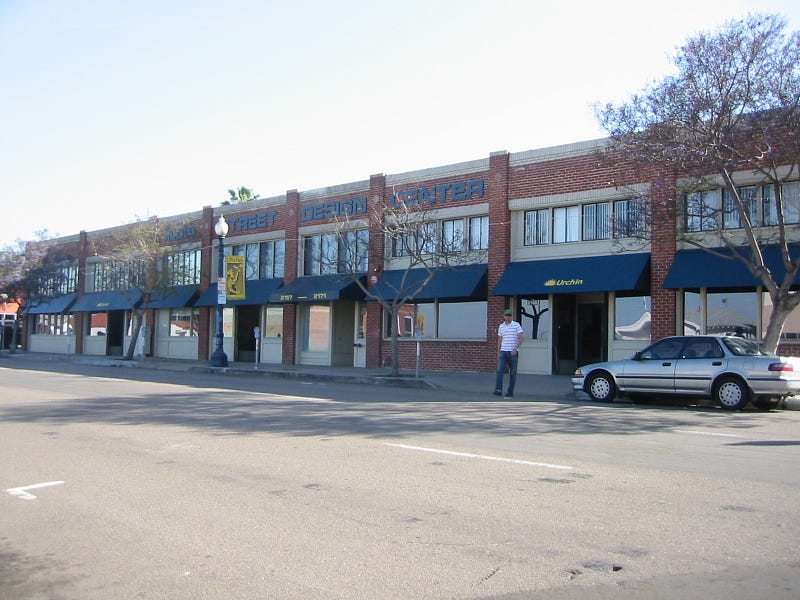
In January 1998, we received the first order for the "Pro" version of Urchin, for $ 199. [babble: why is the "Pro" in the software world equating with "silly"?] Not long after that, we decided to keep only the software part, and all hosting / webdev customers transferred to Console Inc of Trevor Henthorn . We have now become a pure software company.
Therefore, we need to raise more capital. Managing around the family and a Vice President of a shop (NYC's Green Thumb Capital, who recommended Jack), we added an additional $ 1 million, bringing the total outside capital to about 1.25 million. U.S. dollar. And since then, we have not contributed any more capital (with the exception of the amount of 400k dollars of financial debt, and then paid off with interest and stock security). It's not because we don't try … well, explain later.

In the late 1990s, while struggling to find a way to sell this "business" software, we decided to try going towards advertising to expand. For many reasons, we always care about market share rather than money … I don't understand either. Many internet companies at this time were rated the most in terms of "eyeballs" (like fans / followers, compared to horror) and we think we can attract a lot of "irises." "From launching free software and displaying banner ads at the top of the page. So we launched Urchin ASAP, the opposite of Urchin ISP (ISP like the provider). Both are designed for use by hosting operations. We used to think that we will get a few extra coins from the clicks on these ads, besides extremely small CPM … We do not earn any significant money from these banner ads, but gain reputation again. And this software was still very good at that time. Good enough to bring us the first breakthrough.

Before Tumblr, before Blogger, and at the same time with Geocities , there was something called Nettaxi . Taxi- what? Right about that! But at that time they took over 100,000 "sites", and we thought this was an "eye" source for our advertising version of Urchin. They said they did not have money for the "web statistics" service (I am glad that this call has gone into the past), so we "negotiate" again: Urchin will be provided 100% free to In return for the expected advertising profits we will receive from these "eyeballs". How much do we earn? About 4 cents or so, I don't remember and didn't notice either. Somewhat off topic. Since then we have made an additional 100,000 "sites" using Urchin, which are not merits.
Another "initiative" we came up with, imitating what Google did with their logo on special days — we created an Urchin 'guy' in the upper left corner of the interface, he named " Urchin of the day ”. An extremely silly idea, but we think this idea will make customers more sympathetic to us. It may be the same as well. The idea was wasting our designer Jason Collins until the end of the year, he was so enraptured that he forgot to forget even more important things. The photos he made until now made me laugh. Extremely good! We even asked our friend Shepard Fairey (famous photo hour) to make a version of "Power to the people".
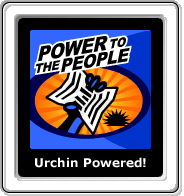
He also helps us to be some promo posters and ads to enjoy free web hosting. One of the best people I've ever met. Of course, now he works for the president of all kinds.
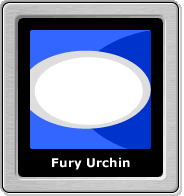
In 1999, Brett Crosby, deputy manager of Sales and Marketing, sought to bring Urchin 2.0 to a wider range. He targets Earthlink as our dream customer, primarily because of their wide range of influences and names. Damn it, they are bigger than AOL! Of course, at that time we knew how to approach big names in such a position, so Brett did what everyone would do and filled out a web form. And so on, again and again. He must also submit this form 20-30 times. Finally, he received a response. Rob Maupin, vice president of hosting (or something like that) agrees to meet us. We were completely taken aback. Might the powerful Earthlink want to meet a stupid group like us? We do not believe our eyes. So we squeezed into the most luxurious car possible (Brett's old Mercedes 420 SEL) and drove straight to Pasadena.
Rob didn't seem impressed. He immediately rejected Urchin 2.0's interface because "too green and blue and green." I have to agree, he is right.

But he still agreed to experiment, and everything went quite smoothly. Urchin might be the most full-featured web reporting tool in the world at the time, but it was also fast, and that's the main reason why web hosts care. Urchin also manages the log file and makes it easier for sysadmins to manage the work, so the ops like it. After making a number of changes required by Earthlink, we negotiated a rather sporadic transaction: successfully exchanging $ 4,000 / month sooner or later would take Urchin software unlimited all over the webset. Earthlink host. We were happy like the clouds.
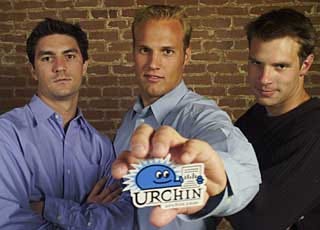

In 2001, the company changed its name to Urchin Software Corporation. Products and sales have surpassed expectations, and we think it's time to make more capital. Anyone who has ever pitched VS (venture capital) must know, this is a long and exhausting process, and businesses will have difficulty in the time of good leadership in this dark side. But everything was quite positive, and after a few meetings, going back and forth, we finally got a proposal from two rather big venture capitalists – Ampersand and JMI . The signing was scheduled at the end of August, but Labor Day passed, then a few more days, and finally capital call (capital call) to LP (limited parter investor) should have taken place. on … September 12, 2001. Uhhh, but no. Suffice to say, the world has more important things to worry about that day.

Coming there, thinking that there will be a capital injection of 7 million USD, like many businesses with this expectation in the beginning, we boosted recruitment and infrastructure investment. We rented two more offices in the same building, and built more furniture. So, without capital, we have no choice but to cut back on spending. Soon after, on a beautiful Friday, we had to eliminate 12 staff members and give up an office area. We call this day Black Friday. Our financial situation was extremely bleak, and we had no choice but to borrow money from our wealthy boys – Chuck Scott and Jerry Navarra . They went out of their way to help, and were arrested and held in court for doing it. A few years later, Thanksgiving is still a bit uncomfortable.
2001 and 2002 were extremely difficult years for Urchin Software Corp. —I remember walking along the corridor of the company, praying for acoustic tiles not only once, "please, let it die", but I didn't die, my spending was cut Super strong reduction, and some employees even sacrificed up to 60% voluntary salary to help financially (thank God, this "payroll" is finally returned).

The budget for technology has progressed very slowly in 2000, the post-bubble period, and while the situation has gradually improved, revenue remains unstable and does not grow as expected. By 2002, our main source of income was annual license deals (with long and complex negotiations). Our biggest deal, worth more than $ 1 million, was negotiated by Jack Ancone with Cable & Wireless (a major international telco / host / ISP).
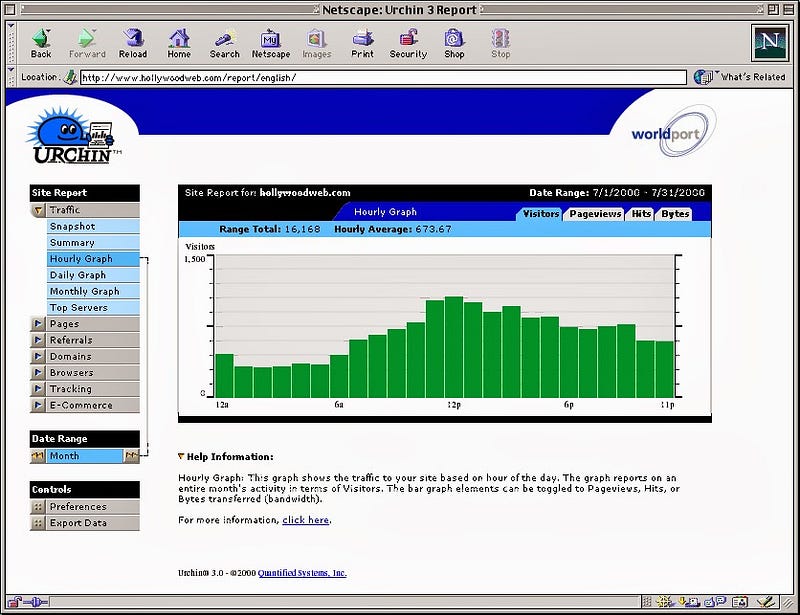
Similar deals are made with Winstar, KeyBridge, Worldport Ireland, all hosts are supported by VC (venture capitalists) with nearly endless resources. It turns out, it's not endless. It all expires before we get paid.
So, to boost sales, people decide to simplify the way they negotiate with hosting companies, even if they do so in the short term. In essence, we deal with Earthlink's "financial child" as a benchmark, but at least there are some potential prospects, the Site License Model ("SLM") is as simple as possible: $ 5,000 / month per physical datacenter, all Urchin software you want, 1-page contract, no slang in law, and there's really not much to negotiate.
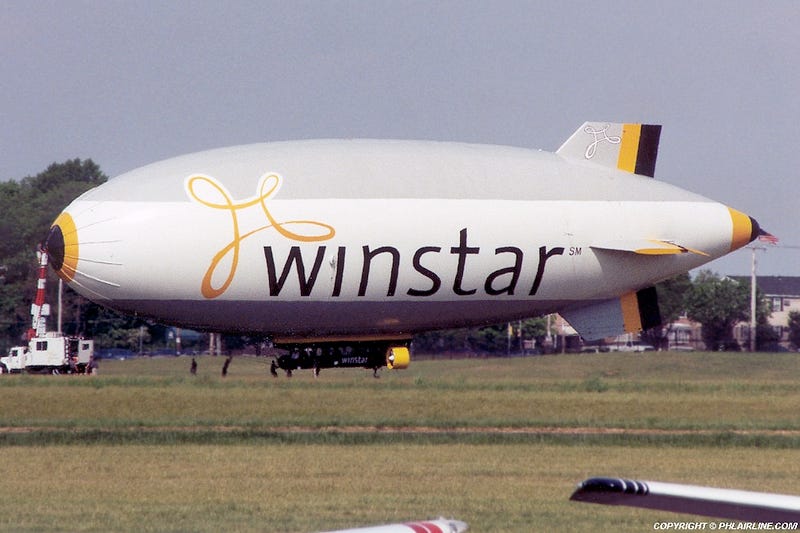
SLM immediately became a big hit, and we contracted with many leading hosting companies in the US and Europe in the following year. Rackspace (now part of IBM), everyone's internet (aka ev1 servers), the planet mediatemple and many other companies agree to do business, many cases require several datacenter. By the fall of 2003, we had positive cash flows, only with these missions, and we also gradually sold more private licenses to self-host organizations, including many Fortune 500 companies. and university systems.

We had to drop almost all sales teams in 2001, but few stayed in – Paul Botto, Nikki Morrissey, and Megan Cash — working almost unpaid and gradually pulling us out. swamp. When we identified the appropriate rose model — low hard wages, high roses with full recollection — all three became superheroes. Paul and Megan moved to work for Google for a few years (Nikki refused to go back to the North in 2005 because he was busy with children.) Paul was still the best seller / BD I ever had the chance to work with.
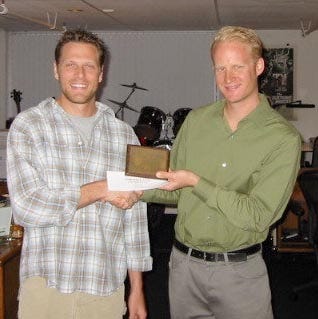
After a failed attempt with the international office in Tokyo (money did not enter [2]), we launched a channel program, running in parallel with direct sales. I still think that with non-English markets, you should still cooperate with local partners. Only Japan has achieved very strong sales for many years, and in order to get this we have to thank Jason Senn, who manages the channel and manages office construction (we are too poor to hire contractors .) Japan is also the most fun place to play in the name of the job. On-sens feast and fire festival? Yes please.
If Urchin 2 helps us cross the threshold, and Urchin 3 isn't bad, Urchin 4 is pretty cool. It has an old-fashioned-aluminum-like-Apple shape, along with the elegant-looking-back-time interface elements, and also the UTM. UTM, or Urchin Traffic Monitor, is a primitive method that helps augment Apache (or IIS, …) files with cookies, in a way that visitors can be set up. This method involves a line of JavaScript in the <HEAD> of each page on the site, and a minor edit to the webserver's logging behavior. Most of our competitors now either use logs only (old and old) or just javascript / cookies (WebSideStory, …) and both ignore many of the information that can be collected. Urchin was the first software to use both data sources in a single unified method, neatly encapsulated in augmented access-log file. Today almost everything you want can be collected through cookie methods, but analyzing logs still has its advantages.
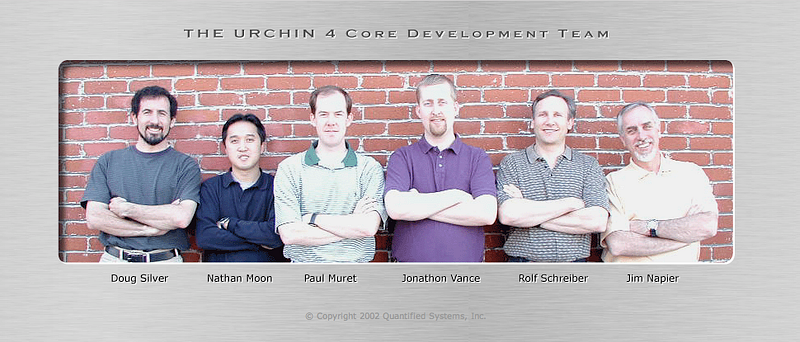
Urchin 4 continues its tradition of supporting a lot, too many nonsense platforms (Google still has Urchin's help 4: check out the OS support … have you heard about Yellow Dog Linux?). I once had the idea that skirmish-platform might help put us in large corporations and universities running AIX or HP-UX, but no, everyone bought Linux or Windows version IIS . Maybe I just like to buy the server on ebay and set Apache with the compiler. If I remember correctly, we sometimes even compile a NeXT version. But at least there is no DEC (I can't boot the system anymore).

Urchin 4 is the first official version to give me the feeling of being able to compete with every other "player". and not just about back-end performance. But Urchin is all over the place, and I'm sure there are still thousands of units running this software to this day. To be honest, Urchin 5 is better than anyone could need. Almost every menu item has an extra menu in the submenu. Quite overwhelming and dry, but 'one analyst' still fascinated each one.

Urchin 5 has e-commerce / "ROI" tracking, the Campaign Tracking Module, and the multiserver version, all of which can implicitly push prices up quite high. But the real key feature, IMHO (released with Urchin 6), focuses on personal access history. This feature sounds too … sensitive … because it's really sensitive. Google did not touch this feature and was immediately removed.

Back from Urchin, we are traditional licensed-software, you pay, you have software. By 2004, it was obvious that we needed to add a hosted version later ("hosted" that would turn into a "cloud", but we didn't know then.) So we bought a bunch of servers, upgraded T !, and the launch of Urchin 6, available on-site (you run yourself) and hosted by us, for $ 500 / month (!) The price is not low, but surprisingly many companies are still willing to pay only to not run Urchin yourself.
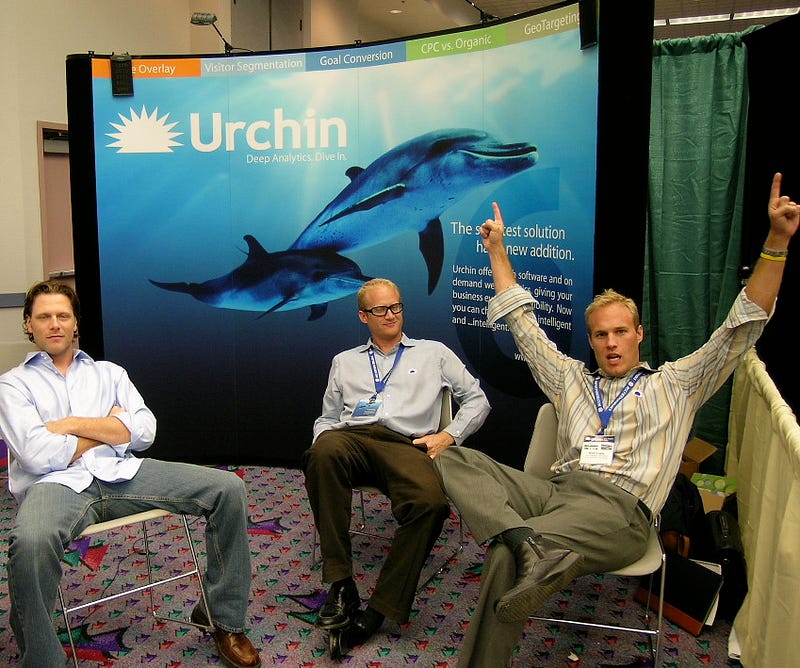
In the summer of 2004, Urchin had the largest installation base among web analytics service providers, based on website number [3]. The exhibition was fun again, and we planned the biggest expansion ever with Search Engine Strategies 2004, in San Jose. There we met two guys from Google Wesley Chan (PM) and David Friedberg (Corp. Dev.) Who were "shopping" (they called themselves) a web analytics company.
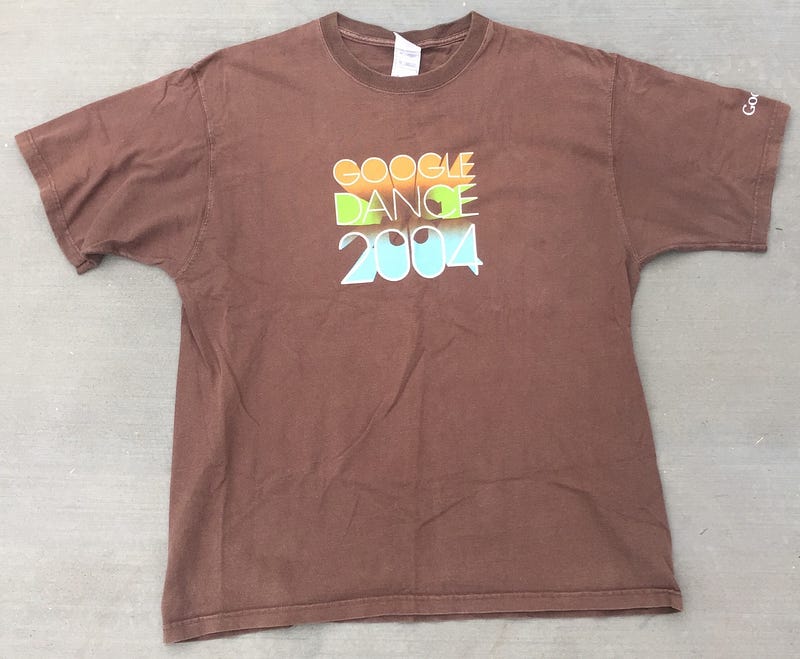
A few weeks later, Google sent an offer to the company. At that time, there were many other parties who paid attention to us – remember WebSideStory? They were in fact public companies and proposed more. But I think we made the right choice.
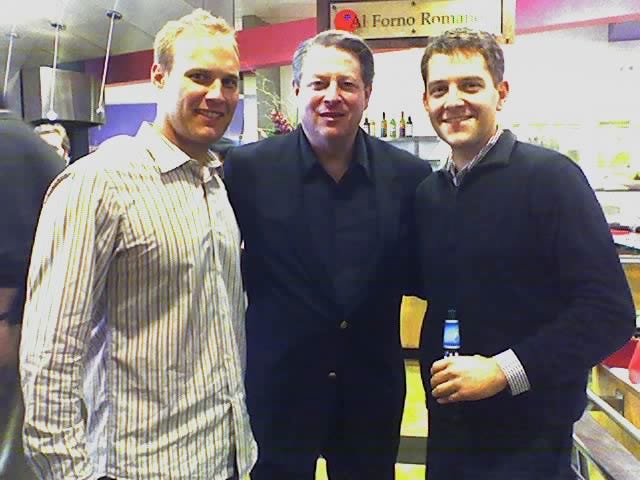
Babble: Friedberg leave Google in 2006 and founded the company named Climate Corporation, is Monsanto acquired for more than $ 1 billion dollars (holiday then make everyone leave.) He also founded Metromile and Eatsa . Excellent!
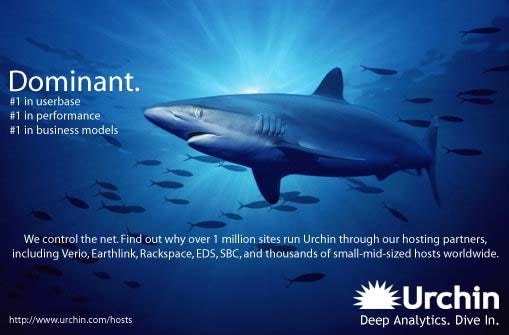
The ownership transfer process is quite difficult. Right after Google IPO in late 2004 should have been done, but the Goole lawyers are a thorn in "@ss", demanding all kinds of IP protection (intellectual property) – four founder founders tiêu tùng nếu chúngs tôi bị phát giác vi phạm bằng sáng chế của ai đó,… Vì lúc giờ này chúng tôi đã là một phần của big G rồi, nên có thể các phía khác (như WebTrends chẳng hạn) sẽ chả ngần ngại gì mà không kiện chúng tôi. Đây là một trải nghiệm đáng sợ khi đứng trước nguy cơ mất hết mọi thứ thật đơn giản như vậy. Cuối cùng tất cả thủ tục cũng hoàn tất (tháng 4 năm 2005), và cổ phiếu của Google nhân đôi (một nửa vốn hỗ trợ của chúng tôi nằm trong cổ phiếu).
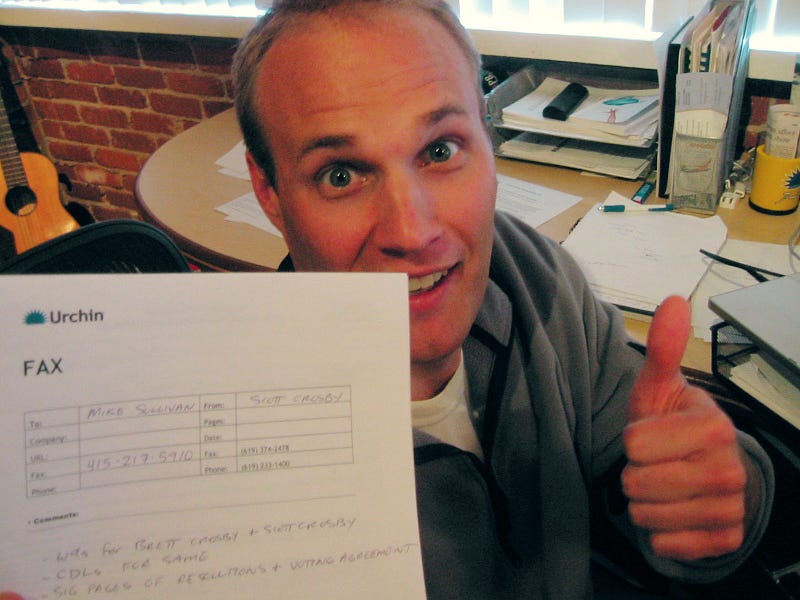
Tôi cho rằng Google vẫn-còn-non-trẻ năm 2005 vui hơn Google Trưởng Thành ngày nay nhiều. Công ty vẫn chưa quá lớn (chỉ khoảng 3000 nhân viên) nên mọi người vẫn có thể tụ tập chơi bời tiệc tùng (tuyệt vời, đã đời) vào mấy ngày nghỉ lễ. Và MC Hammer lúc nào cũng có ở đây.
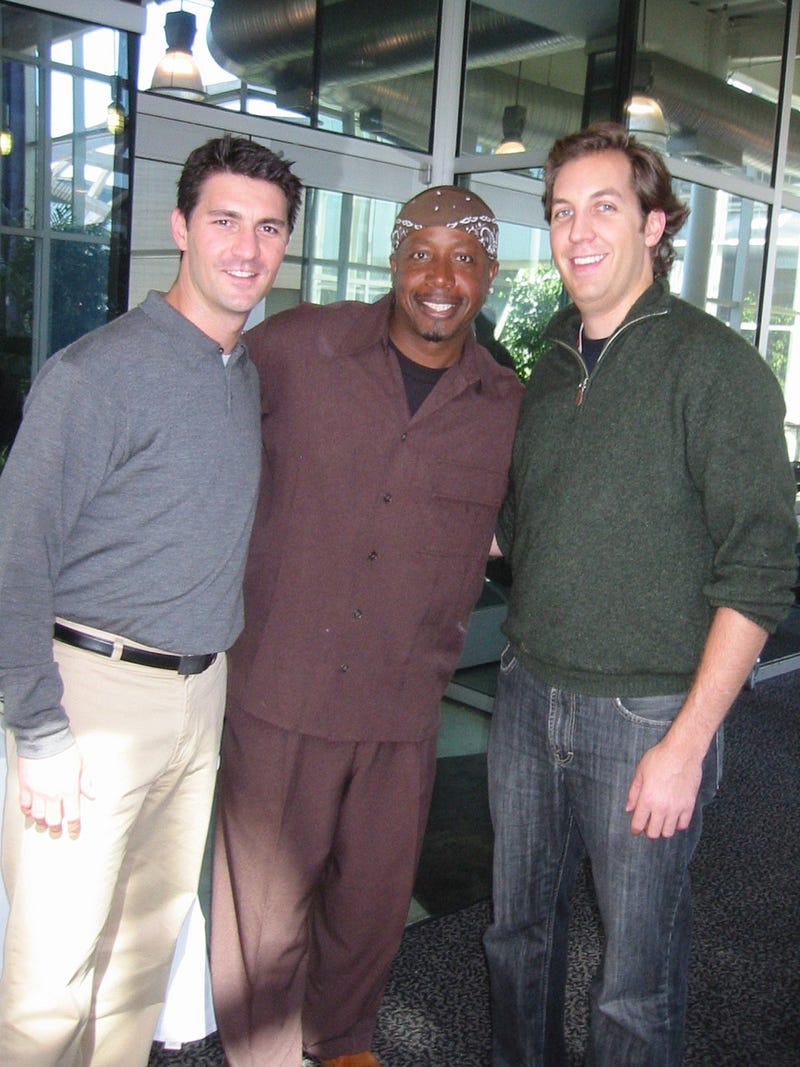
Ngày chúng tôi đầu nhập, Eric Schmidt dành cả một ngày để gặp mặt chúng tôi và tìm hiểu lý tưởng của chúng tôi về web analytics. Anh ấy ngay lập tức thấy đước tiềm năng to lớn khi kết hợp với Adwords spend, và từ đó trở đi anh luôn sẵn lòng giúp đỡ chúng tôi với mọi vấn đề. Vài năm sau, Brett (lúc đó là Marketing Senior Director) có văn phòng ngay bên cạnh Eric, và họ trở nên khá thân thiết. Bạn biết rồi đấy, tỷ phú có đẳng cấp khác xa người thường chúng ta mà.
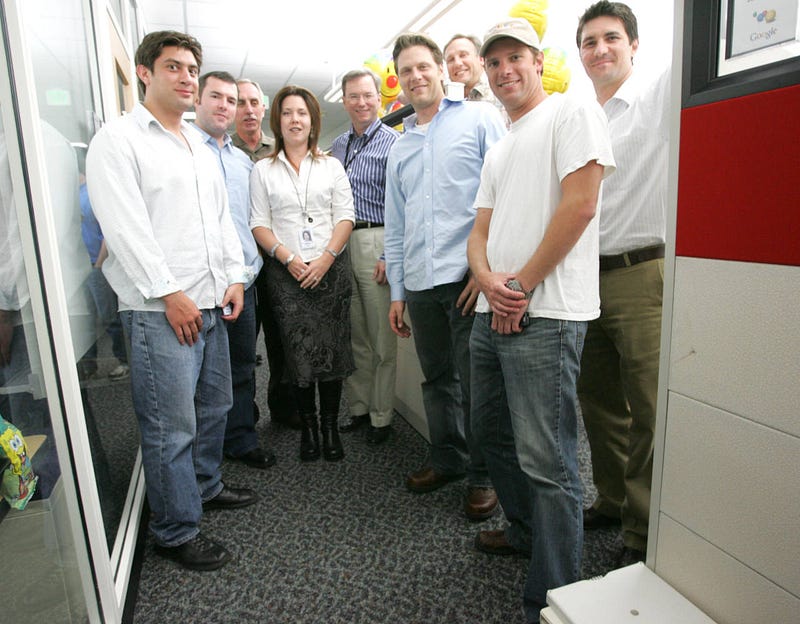
Văn phòng đầu tiên của chúng tôi tại Google là một “bể cá” của Tòa Nhà 42, ở trung tâm khu Mountain View campus. Khu bể cá còn là nhà của một anh engineer mới vào Google, Mike Stoppelman, cậu này có người anh trai mà sau này sẽ mở một công ty tên là Yelp. Mike lúc này là Phó Phòng Engineer ở đây.
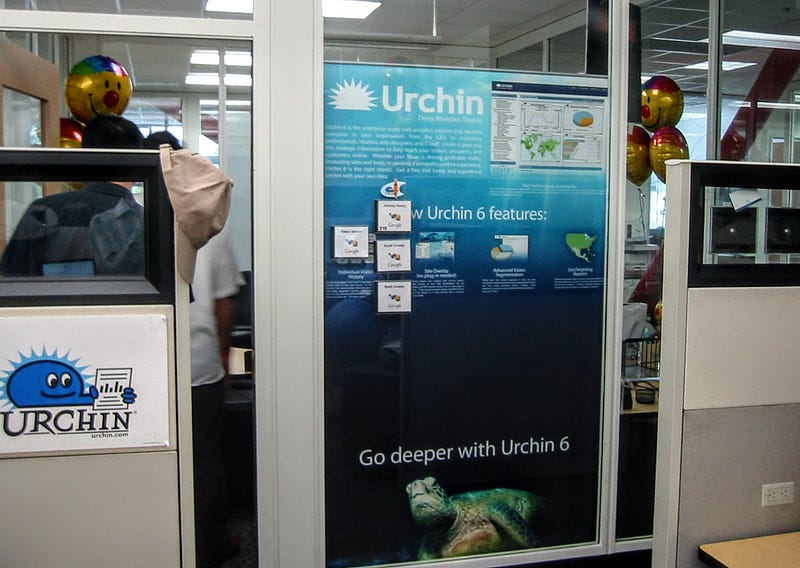

Độ nổi tiếng của Google Analytics ngày nay trong có vẻ hiển nhiên, nhưng đầu năm 2005, chúng tôi vẫn khá hoảng hốt khi lần ra mắt “Google hóa” đầu tiền lại đắt như tôm tươi thế này. Vì thế nên Wesley Chan, Google PM, người đi đầu trong vụ sát nhập, ngay lập tức triệu tập “phòng chiến” và mọi dười đều được giao milestone (OKRs ở xứ Google) trong khoảng thời gian khá hạn hẹp. Paul được giao một đống việc liên quan đến engineering, tôi lãnh một đống việc sale/chuyển giao với các khách hàng Fortune-500, Brett thì là về marketing/PR/branding, Jack thì BD/partnerships.
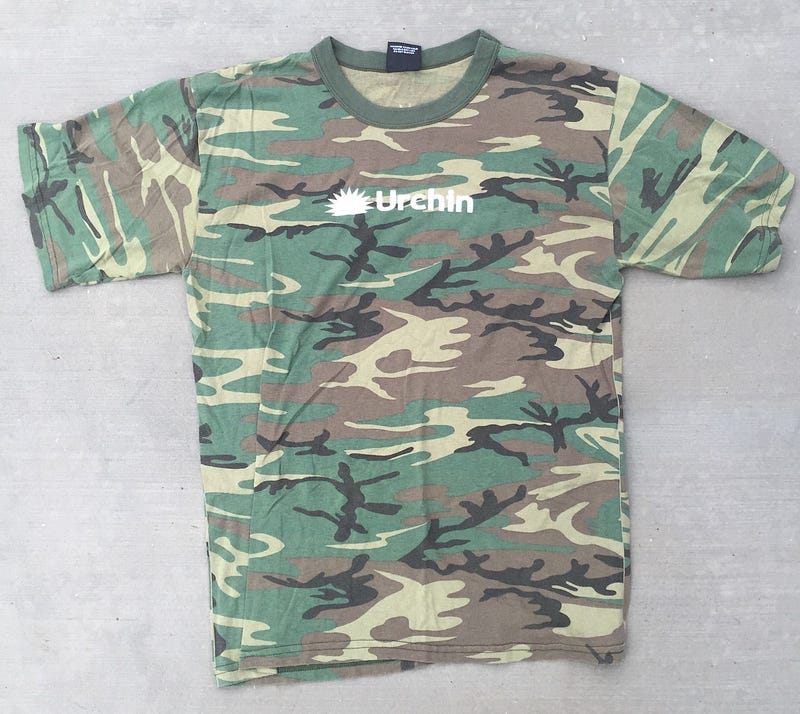
Đây là khoảng thời gian thú vị và sôi nổi, với rất nhiều công sức bỏ ra để Google có thể bắt kịp tiến độ—nhiều người chúng tôi đã phải đi khắp đất nước đến các văn phòng, outpost Google xa xôi. Đến khi nghĩ rằng mình đã sẵn sàng ra mắt rộng rãi vào tháng 11 năm 2005, chúng tôi lo sốt vó cả lên. Có ai để ý không? Hóa ra là có. Sau khi tuyên bố “Urchin from Google” giờ đây sẽ cung cấp miễn phí cho mọi website trên thế giới, nhu cầu tăng cao đến nỗi cơ sở hạ tầng của Google cũng phải rên rỉ, và đội SRE buộc chúng tôi phải tắt đăng ký cho đến khi có thể sắp xếp lại tài nguyên serverI(,…) cần có để mở lại.
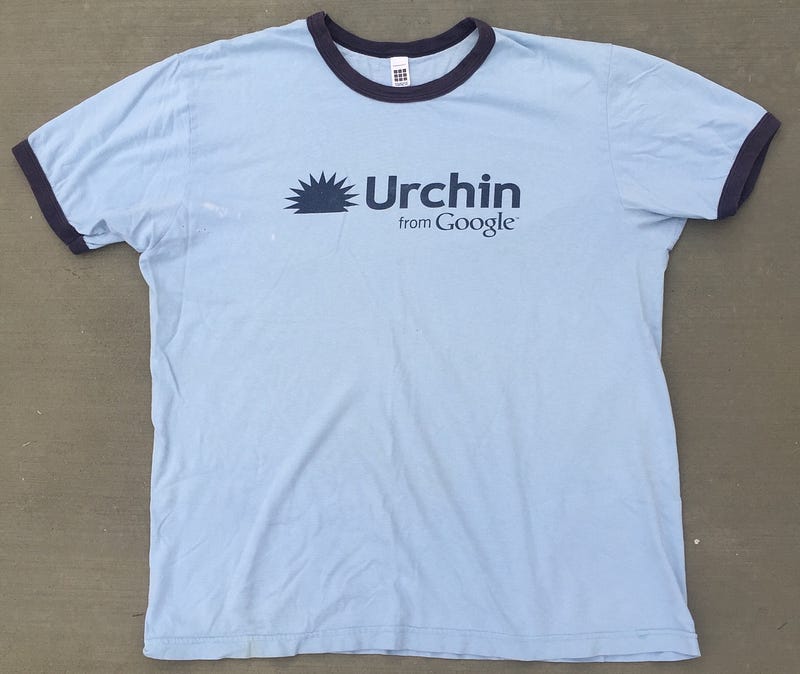
Đây là kiểu vấn đề mà ai-cũng-muốn, nhưng rất nhiều người vẫn bực mình. Vài tháng sau, mọi người đã có thể đăng ký trở lại thông qua phương thức invitation cũ, và tình huống bão hòa GA chúng tôi biến đến hiện nay đã bắt đầu xảy ra.

Hiện nay, Google mua rất nhiều công ty. Một vài công ty trong số đó mang lại thành công rực rỡ, trong đó có YouTube và Keyhole (Google Earth), nhưng nhiều công ty khác thì “cuốn theo chiều gió” (mặc dù cũng hay và tiềm năng ghê lắm). Như Dodgeball chẳng hạn. Tôi cho rằng lý do một phần là vì cách Google mua công ty và một phần vì sự mê mẩn công ty lớn. Chỉ cần một lượng đô la (nghe nói có lần đến 50 triệu đô) và VP la to “Mua đê!” là xong xuôi. Ngay khi họ gia nhập, cậu VP đó đã bỏ đi rồi, hoặc có khi bị phân tâm cho các công việc khác. Hóa ra, chả ai quan tâm cả, và nồi canh tập đoàn sẽ nuốt chửng nhân viên và sảnh phẩm mới vào thành một hỗn hợp chả ra hình thù nào cả. Trong thực tế, chả ai ở Google quá quan tâm đến sản phẩm nào không sinh lời được ít nhất 100 triệu đô mỗi năm. Urchin tất nhiên lúc ấy cũng chả kiến được nhiều tiền như vậy, nhưng may thay chúng tôi lại quen biết với những người đồng minh quyền lực: Wesley Chan và Eric Schmidt. Wesley là PM (product manager) hiểu được nhu cầu của Google với một công cụ analytic hiệu quả để tăng doanh thu từ Adwords. Anh ấy cũng rất quả quyết không để vụ thu mua “của ảnh” trở thành thất bại, và không bao giờ bỏ cuộc. Nhưng tất nhiên không gì có thể sánh với việc có CEO quan tâm đến team của bạn, và may nắm cho chúng tôi, Eric ngay lập tức thấy được tầm quan trọng của một công cụ phân tích traffic web với Adwords. Vài năm sau, Google thực hiện nghiên cứu nội bộ quy mô lớn với một loạt “phân tích chất lượng” đến khắp các mô hình, và nghiên cứu chỉ ra XX% gia tăng trong giá trị quảng cáo với một lượng lớn khách hàng được nghiên cứu. Như thế là nhiều tiền lắm đấy.

Năm 2006, một số nhân sự Urchin bắt đầu chạy lung tung trong Google, số khác thì bỏ đi. Hiện nay, chắc là khoảnh 12-15 nhân sự Urchin ban đầu vẫn còn làm việc ở đây, một số trong đó vẫn làm việc với GA. Đáng chú ý nhất, Paul làm phóng phòng engineering, với hàng trăm kỹ sư báo cáo với anh ấy. Anh ấy không chỉ sở hữu GA, mà còn display ads nữa. Anh Paul này, thông minh, tài giỏi thật.
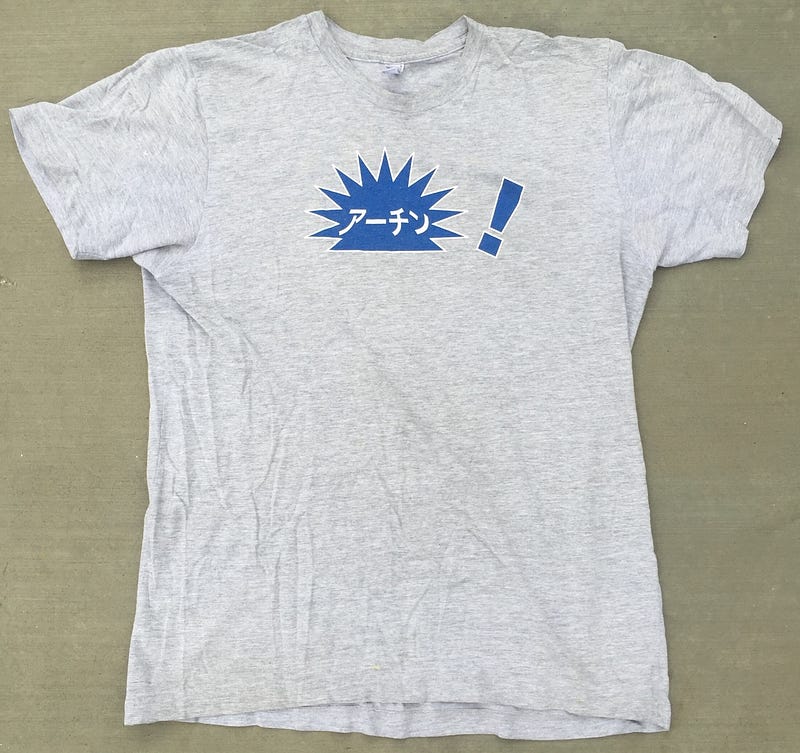
…
Theo như tôi biết, Google Analytics đang chạy trên một tỷ lệ domain cao và không ngừng gia tăng trên internet. Đây là cuộc nghiên cứu của Pingdon cho thấy 62% site hàng đầu có sử dụng nó . Sau đây là một minh chứng nữa chỉ ra hơn 10 triệu site đang dùng (15,429,94) tính đến 2012. Một công bố nữa cho thấy hơn 45 triệu site đang chạy GA tính đến 2015.
…
Urchin/GA đã lan đi rất xa và được nhiều người biết đến, chắc cũng vì lẽ đó mà cả cuộc hành trình này lại thỏa mãn đến vậy. Được thấy những con người đến từ Urchin như Nick Mihailovski và Nathan Moon đang sống rất tốt ở Google cũng làm tôi rất vui. Và tất nhiên là Paul Muret nữa, phó phòng engineering. Tôi cũng rất mừng vì tất cả các nhà đầu tư của chúng tôi đều hái được ra tiền và nhận được cố phiếu Google theo giá 2005. Cám ơn tất cả mọi người một lần nữa vì cuối đã đưa show hài kịch vụ đầy lỗi lầm này đến đích. Chúng tôi (rõ ràng) không thể đạt được thành công như vậy nếu thiếu các bạn.
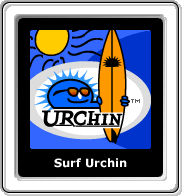
Chú thích:
- Laserdiscs: Đĩa 12″, giống đĩa băng sáng bóng. Tôi chắc là giờ vẫn có người thích dùng chúng.
- Tiền sẽ vào thôi là câu cửa miệng của Chi Kwan, giám đốc khu vực Nhật Bản của chúng tôi. Chắc điều ngu ngốc nhất tôi từng làm là mở văn phòng ở Tokyo. Đốt mất một đống tiền, mà chả thu lại được cắc bạc nào cả. Chúng tôi mất cũng gần một triệu đô la cho ý tưởng “bộc phát thiếu suy nghĩ này”. Tuy vậy, cuối cùng chúng tôi cũng tìm được cách kiếm thêm tí tiền ở Nhật: hợp tác với một nhà phân phối. Họ thu đến 70% lợi nhuận, nhưng họ sẽ lo hết mọi thứ, kể cả đặt CD vô hộp. Ngã mũ trước Runexy ! Và chúng tôi có một câu nói vui để nói mãi về sau. Bất cứ khi nào chúng tôi thiếu tiền, mọi người cứ nhan nhản “tiền sẽ vào thôi”, và tiền… luôn luôn vào.
- Tính theo thị phần— kết quả này không chuyển được thành doanh thu cao nhất. Một kiểu thông số phù phiếm, nhưng chúng tôi vẫn được tiếp động lực rất lớn.


Lời kết: Một số bài học
Nếu tôi được làm lại từ đầu, tất nhiên tôi sẽ làm nhiều thứ khác đi. Sau đây là những đút kết có được từ sự thật đau lòng của (chúng) tôi:
- Tiền bạc không phải tất cả. Tôi cực kỳ nhất mạnh điểm này (nên mới đưa lên số 1). Tuần suất làm ăn còn quan trọng hơn là vắt được từng đồng bạn “đáng lẽ” vắt được từ một khách hàng. Thực hiện hai vụ giá 1$ mỗi vụ vẫn tốt hơn một vụ giá 2$.
- Giảm tiếng lóng ngành luật, giảm chữ, thu nhỏ hợp đồng lại. Một trang là quá đủ. Hãy tìm mọi cách để đối tác làm ăn đọc xong và thực hiện giao dịch ngay trong ngày hôm đó. Hãy tránh xa các thuật ngữ cần đến luật sư giải thích. Warren Buffett cho Goldman Sachs mượn 5 TỶ đô chỉ trên một mẫu note viết tay. Đó vẫn là thỏa thuận có ràng buộc pháp lý. Đơn giản=ít cơ hội bẻ cong, và không có cớ để trì hoãn.
- Thời gian giết chết mọi thỏa thuận (chỉ để tóm tắt lại 1 và 2)
- Chuyên hóa thật sớm. Thu hẹp thị trường. Sẽ chả có ai tin bạn khi bạn nói rằng bạn sẽ phục vụ tất cả thể loại khách hàng. Tính chính đáng/tín nhiệm là ưu tiên hàng đầu. Không ai có thể làm được tất cả mọi thứ, ngay cả khi bạn làm được, cũng sẽ chả có ai tin.
- Hãy quan tâm hơn đến kích thích bán hàng, và đừng giới hạn thu nhập của nhân sự sale trong công ty của bạn. Hãy tăng hoa hồng nếu đạt được mục tiêu, truy hồi đến từng đồng một — ví dụ, có thể hoa hồng là 8% lên đến 100k$/tháng, rồi thành 10% (áp dụng luôn với cả 100k$ trước đó, chứ không chỉ doanh số từ đó trở đi). Nếu nhiều khi nhân sự sale kiếm được nhiều tiền hơn CEO, bạn đang đi đúng hướng rồi đấy.
- Trả hoa hồng ít nhất là hàng tháng, theo quý thì quá lâu, và sẽ ảnh hưởng đến động lực. Người làm sale suy nghĩ ngẵn hạn, và họ nên như vậy.
- Minh bạch kế toán—hãy thật minh bạch với nhân viên, thật sớm, trước khi bạn trở nên thật sự không thỏa mái. Tất cả nhân viên cần biết được lương thưởng của mình, số liệu bán hàng hiển thị sale của công tuy hằng ngày/hằng tháng theo thời gian thực, cùng với cân bằng dòng tiền, từ đó mọi người mới biết được họ phải nhắm đến mục tiêu nào—về mặt lợi nhuận.
- Overcommunicate organizational clarity .
- Tuyển dụng không dễ, sa thải càng khó hơn. Ai cũng lảm nhảm về việc tuyển dụng “sao hạng A” và đại loại vậy. Hay theo cách khác, các bạn có thể tiên đoán được một người khi chưa thấy họ làm việt tại công ty của bạn? Nếu làm được như vậy, thì bạn giỏi tuyển dụng hơn tôi rồi. Sự thật là bạn cần phải có lý do vững chắc để sa thải ai đó không phù hợp. Hãy hành động ngay khi nhận thấy đó là điều cần làm. Hãy rộng lượng với người bạn sa thải—nếu họ nói tích cực về công ty bạn sau khi bị bỏ rơi, như vậy bạn đã làm đúng. Hãy cố hết sức để tuyển về người tốt nhất (thông minh hơn bạn là mục tiêu phấn đấu), nhưng hãy chấp nhật sự thật: đây là một canh bạc không hơn không kém. Hãy cố gắng làm tốt nhất có thể, và buôn tay sai lầm của bạn.
- Tiền bạc sẽ đốt lỗ trong túi bạn. Hãy huy động đúng số vốn bạn cần để hòa vốn, có thể thêm vài % nữa để dự trù. Mỗi 1$ bạn huy động được, bạn phải thuyết phục VC tin thêm 10$ nữa. Khung thành càng xa, bạn càng khó ghi điểm.
- Và cuối cùng, “quy luật” quan trọng nhất thể giưới: nếu bạn muốn ai đó ngồi đọc email của bạn, “chịu khó” viết càng ngắn càng tốt.
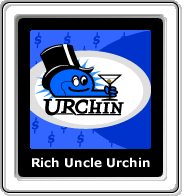
ITZone via Urchin
